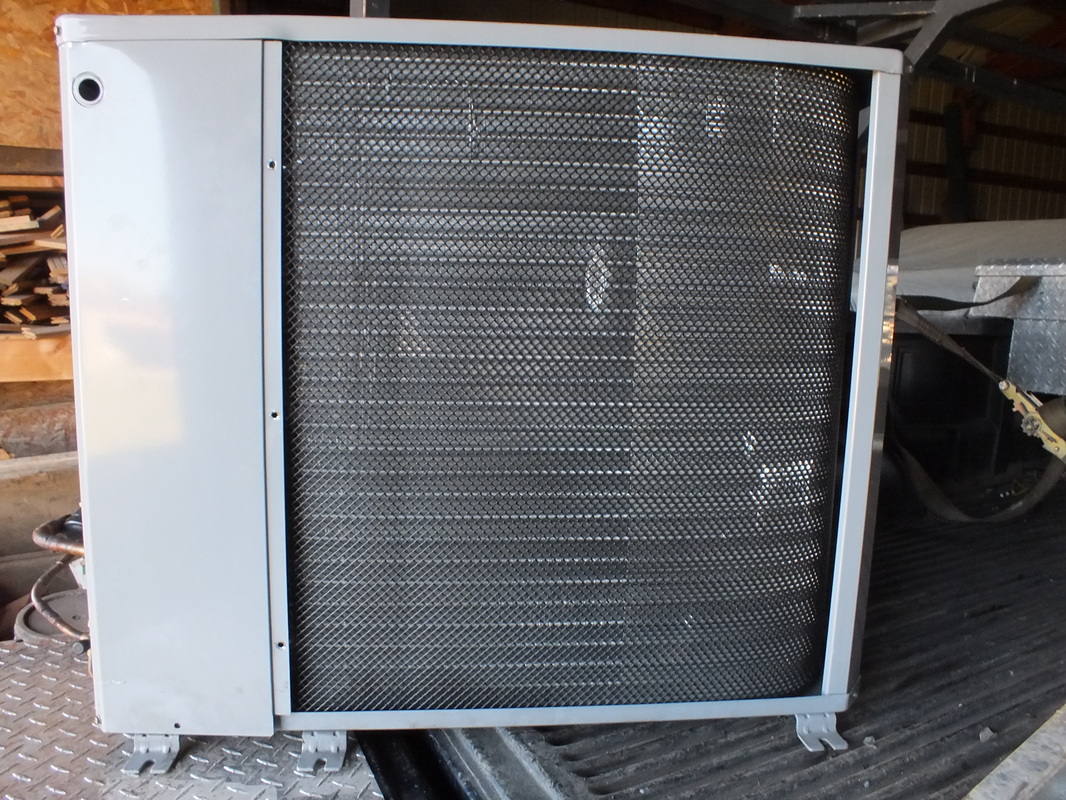How the condenser works
Condenser operation
When the heat is absorbed by the evaporator, it passes through the compressor, is compressed to a higher pressure, then passes to the condenser.
With the higher pressure, the boiling point of the refrigerant is raised to above the outdoor ambient temperature/pressure. Sensible heat (superheat) that has been added to the gas by the heat of compression begins to bleed off the refrigerant until it reaches a temperature that corresponds to the pressure at which it can condense. At that time, the refrigerant condenses. Here both gas and liquid are present. The refrigerant is now called saturated. The liquid/gas mix at this point will not change in temperature but will change its state to a liquid. The vast majority of the heat is released during this phase.
Once the latent heat has been removed, there will be no more gas in the pipe. The liquid then can subcool. The last few passes of the condenser will release sensible heat before it travels to the expansion device.
The video below gives a representation of how the condenser works.
With the higher pressure, the boiling point of the refrigerant is raised to above the outdoor ambient temperature/pressure. Sensible heat (superheat) that has been added to the gas by the heat of compression begins to bleed off the refrigerant until it reaches a temperature that corresponds to the pressure at which it can condense. At that time, the refrigerant condenses. Here both gas and liquid are present. The refrigerant is now called saturated. The liquid/gas mix at this point will not change in temperature but will change its state to a liquid. The vast majority of the heat is released during this phase.
Once the latent heat has been removed, there will be no more gas in the pipe. The liquid then can subcool. The last few passes of the condenser will release sensible heat before it travels to the expansion device.
The video below gives a representation of how the condenser works.

